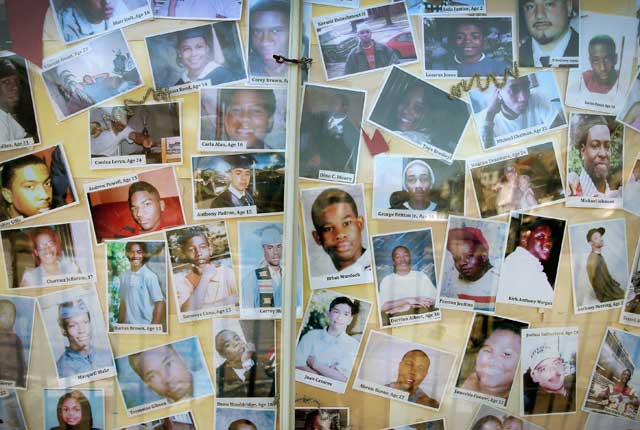Chicago’s gun violence is back in the news again with yesterday’s headline: 4 dead among at least 36 shot in 36 hours. "Chiraq’s" gun violence and murder rate have been well covered by media over the last few years. A brief recap follows, in addition to the latest on solutions.
Most homicides occur on the city’s predominantly black and Latino south and west sides. Much of the violence concentrates among youth. Almost half of Chicago’s 2,389 homicide victims between 2008-2012 were killed before their 25th birthdays, according to a new Chicago-focused human rights report from Amnesty International. And that says nothing of the youth who survive shootings (more than 2,300 in 2013) or witness them. Again, from Amnesty: "Studies have shown that youth exposed to high levels of violence often become the victims and perpetrators of the violence, exhibiting the same psychological trauma as children growing up in urban war zones."
A fair question then: how is Chicago–from communities to schools to city hall to hospitals–intervening in the lives of all those young people with unaddressed psychological trauma?
New FBI director, James Comey in a visit yesterday to the city reportedly said: "You can’t arrest your way to a healthy neighborhood"–even though cops and more cops appears to be the public’s main demand. So if according to America’s top cop, the punitive arm of the criminal justice system is only one part of the city’s solution to gun violence and extreme rates of victimization among youth, what are others?
The new Amnesty report begins by recognizing that scattering public housing residents and recent school closings contribute, respectively, to fracturing previously hierarchal gangs and endangering Chicago’s youth. It makes a few tangible recommendations as well. The first: properly investigating allegations of torture levied against Chicago police from the 1970s through the 1990s. One new investigation from watchdog group, BetterGov.org tracks increasing police misconduct claims over the past decade as well as skyrocketing costs ($84.6m in 2013, alone). Real reform won’t come however, it says, until CPD addresses its own "no-snitch" culture and tolerance for abuse.
Other recommendations, including adequately funding anti-gang youth initiatives and beefing up protections for immigrants and LGBTQI individuals, make the Amnesty report a worthwhile read. Note too, how one Calif. group aims to help its crime victims of color living in high crime neighborhoods by first making them visible.
(h/t Chicago Tribune)
